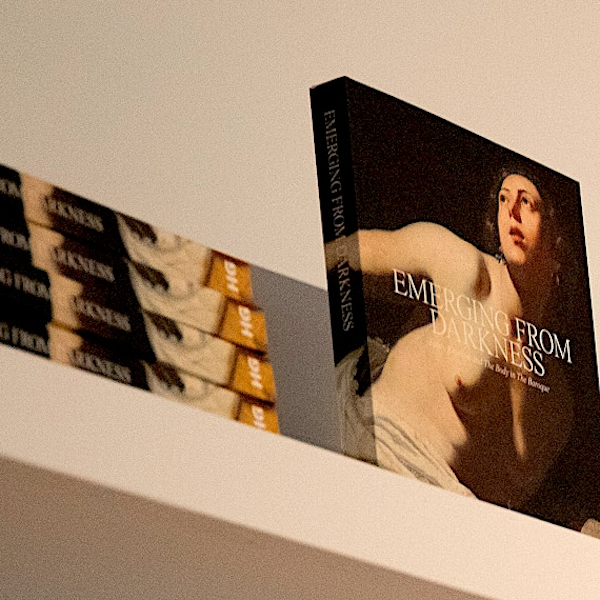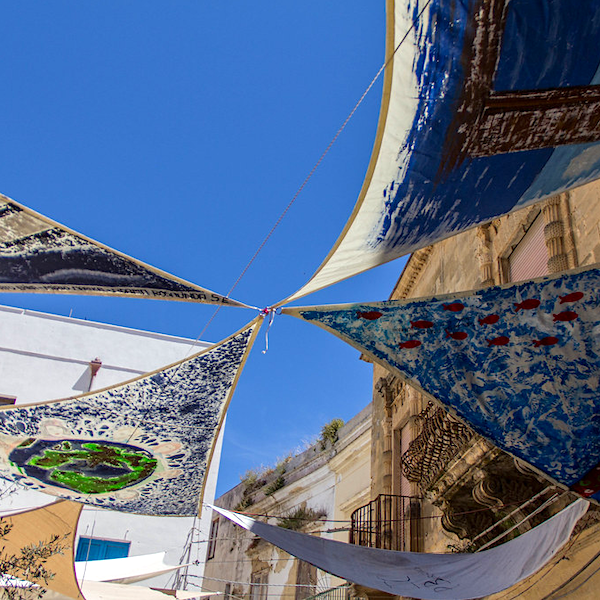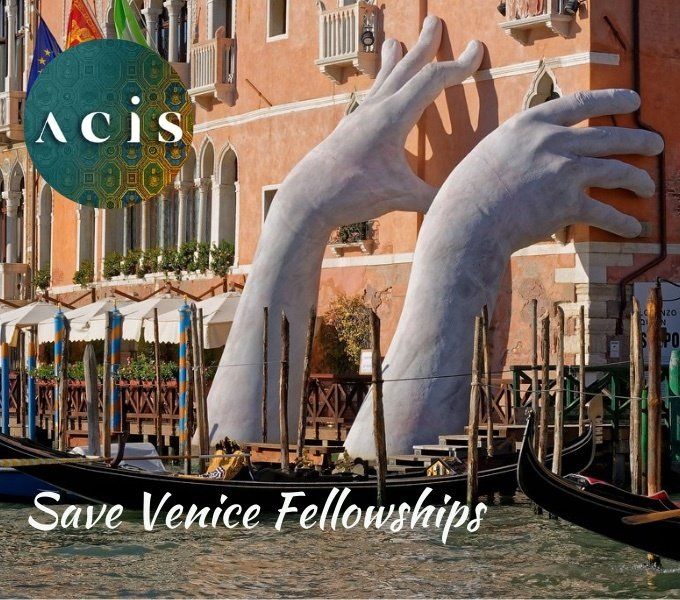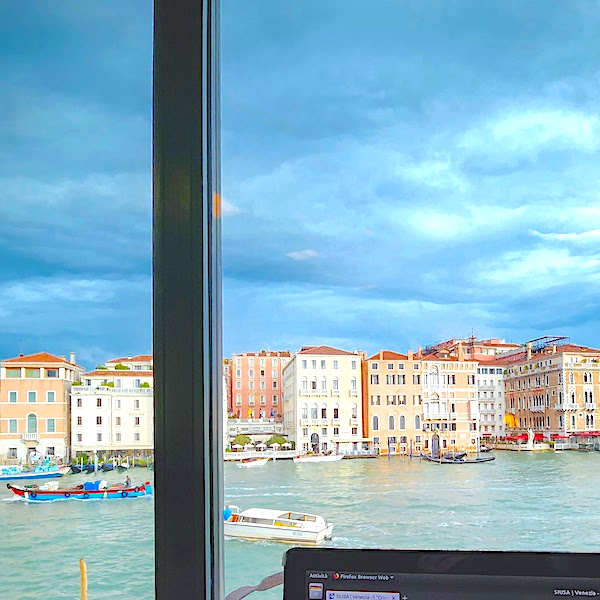Slow Clothes: A Tale of Two Brothers, Two Sisters and a Butcher
I started this year with some spinal surgery. The long recuperation which has followed has brought new resonance for me of the Italian concept of ‘Slow’, a concept first articulated by Carlo Petrini back in 1986 as a protest against fast food. Everything in the last two months for me has had to proceed at a slow pace, sometimes excruciatingly so. And yet being forced to take things slowly has proved not to be a bad thing overall. Therapists in rehab, kindly helping me to manage my pain levels, have inducted me into Mindfulness Therapy, which I have found very helpful. On reflection, I think that the principles of ‘mindfulness’ lie at the core of ‘slow’ – taking time to think, to observe, to reflect, and just to concentrate on the joys to be had in the simple. It has reminded me also of the first time I started to understand the broader principles of ‘slow’, on a stunning April day in Florence in 2011, in the extraordinary textile mecca that is the Casa dei Tessuti .
Wild teasel, used to full woollen cloth in the traditional manner, on a piece of fulled wool at the Casa dei Tessuti.
In a two-storey shop just behind the baptistery in Florence, Romano and Romolo Romoli have been taking care of the high-end textile needs of elite consumers for over half a century, as did their father Egisto, who founded the Casa dei Tessuti in 1929. Members of every royal family in Europe have come here to source fabrics, and Australia’s own Sir James Gobbo is also a loyal customer and now friend of the brothers. Every inch of shelf space is covered with bolts of seriously delicious fabrics, with serious prices to match – Dior fabrics from the 50s, hand embroidered linen bolts from Lyons, silks of every kind and density, and, of course, this being Florence, woollen fabric of unutterable velvety softness. On both floors, scattered here and there, are antique relics of the Florentine textile industry of long ago, collected by the brothers and used by them to demonstrate some of the methods used by Florentines to produce the ‘fulled’ cloth for which their city was famous, a technique which helped underpin the textile economy of the Renaissance.
I first met the Romoli brothers in 2008, whilst on a Harvard Fellowship at Villa I Tatti in Settignano. One scant glance at me and especially at my clothes, would have indicated to them both that I was not going to prove a lucrative customer, not then, not ever. And yet both of them greeted me immediately with deep and genuine warmth as though I were an old friend invited to the heart of their home. Delighted that this was my first visit to their shop, they immediately took me by the arm and spent more than an hour with me finding out about me, showing me their shop, and telling me about some of their extraordinary customers. When they discovered that I was staying at I Tatti, they were doubly enthusiastic. This was because Bernard Berenson, the original art connoisseur, and founder of I Tatti, had been a valued customer of the Casa dei Tessuti. Romolo asked me whether I would still be down in the city within the next hour or so, and, when assured that I would be, immediately rushed off to his house back up in Settignano to get me a bottle of the olive oil produced from the olives in his garden. High on a shelf, running the length of the shop, are dozens of books, bound as only the Florentine bookbinding industry can. These are their Visitors Books. I was asked to write in the latest one. Feeling somewhat intimidated, with my insignificant scrawl and entry alongside so many luminaries, the brothers were insistent, and so I wrote.
Feeling very moved by the experience, a few days later I decided to bring my daughter there, who is an aspiring opera singer. Once the brothers realised that my Lydia can sing, their enthusiasm escalated and Romano, who is also a published poet, immediately presented her with a copy of a poem he had written for another client, an American who had sourced her wedding fabric from them. That woman had been so moved by the experience of buying fabric from the Romoli that she included Romano’s poem on her wedding invitation. Some of Romano’s poetry is published in a collection he called Fiori di Cardo, the word for the thistle, or teasel, used since ancient times to full cloth, and a title also indicative of his thoughts, fiori , on things he has learnt after years in the textile trade in Florence.
The author (in fast clothes) with Romano Romoli (in slow clothes) and a selection of threads of gold and of silver.
And so it was that in 2011, on the kind of spring day that belongs to Florence alone, I suggested to the lovely Christina Dyson that we should go and visit the Romoli. This time I timorously asked Romano whether I might interview him. Fortunately for me, he agreed, and so we spent several days, both in Florence, and up in his beautiful house in Settignano overlooking Florence, talking. One of the main themes of our conversation was that of the values of the Florence of his childhood. Wishing desperately that I was not wearing a product of a Chinese sweat shop on my back, I listened whilst Romano (wearing an understated but wonderful woollen suit) told me that he was an advocate not merely of ‘slow food’ but of ‘slow clothes’. The problem with the youth of today, he opined, was partly that they gave no thought to their clothes; to the processes that produce the cloth, to the care that should be spent on their construction and in their wearing. Instead clothes had become disposable – fast, not slow. The Casa dei Tessuti web site claims that their store has been ‘weaving the fabric of life for 75 years’. The claim is not an empty one. I thought how wonderful that the Romoli brothers could spend their lives enriching the lives of others through a deep and really profound sense of slowness, of hospitality, of quality in all its senses.
Rita Greco and Angela Rosa in their eponymous shop in Venice.
This particular emphasis on slowness was reinforced for me on a trip to Venice last year. There, on impulse, I went in to a shop I had walked past numerous times before, which had nothing but wonderful lampshades in the window. Feeling slightly foolish, again because it was clear that I was not in the market for a lampshade, I was immediately greeted with warmth and inducted into the world of the Greco sisters. Like something from a Dickensian novel, Angela Rosa and Rita Greco dress identically, from the shoes on up, and speak almost as one person. And, like the Romoli brothers, they have dedicated their working lives to one kind of industry, in their case that of making lampshades from antique Fortuny fabrics, and to doing it incredibly well. The Spaniard Mariano Fortuny settled in Venice and, although creative in many fields, is perhaps best remembered now for his contributions to textile and fashion design. His sylphan Delphos gowns and his printed velvets and silks are as scrumptious as they are inimitable. To create lampshades from such fabrics introduces another element of luminosity to them. Although their lampshades are now in houses of the famous throughout the world, as well as in high-end hotels in Venice itself, the Greco sisters greeted me with hospitality, and exuded a sense of joy. Joy in the small. Joy in the beautiful. Joy in the slow.
Further ruminations on ‘slow’ gained pace at dinner at my home the other night. Seated at the table was the Renaissance historian Nick Terpstra, who has been visiting Melbourne from his hometown of Toronto to take part in the ANZAMEMS conference. At dinner he told us about his son Christopher who spent several months learning the trade of butchery from the superstar of butchers, Dario Cecchini , in Panzano, just south of Florence. I’m not sure that any other butcher store in any country other than in Italy would have on its home page a declaration that in the store “è sacra l’ospitalità”, or that in the accompanying restaurants “si mangia tutti assieme in convivio” and that in his butchery Dario is inspired by “la ricerca della qualità.”
As Italy goes to the polls, and the media is full of negative forecasts for the future of this beautiful country, it is this notion of ‘slow’ that continues to bring me back there, whether consciously or unconsciously. I remember the very first ACIS conference , co-convened by Gino Moliterno and David Moss, at the Australian National University in Canberra. Its theme was ‘The Importance of Italy’. One of the keynote addresses by, I think, Peter Bondanella, concluded that Italy for him was important, because any country in which the owner of even a lowly hardware store can delight in arranging screwdrivers artfully in his shop window, is a country that moves one at a deep level. Whilst the art, literature and architecture for which the country is famous also of course move me, it is those who still manage, through hard economic times and gruelling socio political realities, to take joy in the small, who find beauty in a bolt of cloth or a lampshade, or a side of beef, and who warmly offer you hospitality so that you can delight in the small yet beautiful with them, that makes the country so deeply and enduringly affecting.
Share this:
- Share on Tumblr
- </div></li><li class="share-end"/><li class="share-reddit"><div class="reddit_button"><iframe src="https://www.reddit.com/static/button/button1.html?newwindow=true&width=120&url=https%3A%2F%2Facis.org.au%2F2013%2F02%2F24%2Fslow-clothes-a-tale-of-two-brothers-two-sisters-and-a-butcher%2F&title=Slow%20Clothes%3A%20A%20Tale%20of%20Two%20Brothers%2C%20Two%20Sisters%20and%20a%20Butcher" height="22" width="120" scrolling="no" frameborder="0"/></div></li><li class="share-end"/></ul></div></div></div></div></div> <div id="jp-relatedposts" class="jp-relatedposts"> <h3 class="jp-relatedposts-headline"><em>Related</em></h3> </div></div> </div>












